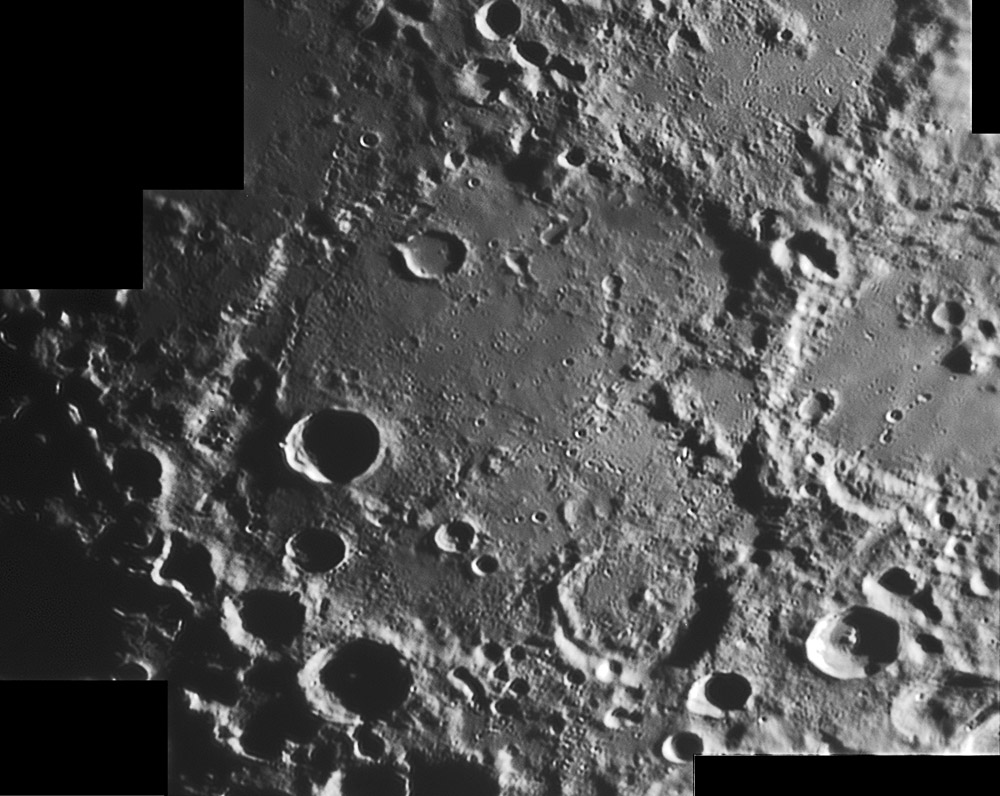February 19, 2023
Reading the Rocks
Originally published March 28, 2013

image by Antonio Lasala García, Morata de Jalón, Zaragoza, Spain
Deslandres has been a recorder of lunar history for a long time. It seems to be older than most of the features near it, based on the observation that they are inside it or cut its rim - for example, Walther on the east. I suppose Deslandres is younger than the Nubium Basin which is structurally invisible but it's southern edge is indicated by Nubium lavas at upper left. Being so near a basin rim would probably severely degrade a crater and Deslandres still has a largely continuous rim on the basin side. The depth of Deslandres is only 500 to 2500 m, much less than when it formed (perhaps 6 km or so originally) so the floor has been significantly filled in, probably by Imbrium and Orientale basin ejecta and by the general impact-caused shaking that transports rim material downslope (mass movement). One old structure that is largely covered now is the grabenthat cuts the edge of Lexell (bottom right) and continues toward the center of Deslandres. The southern half of the floor is rougher and more pitted than the northern part, suggesting that the patches of smooth material in the north are younger. The small lake of maria lava inside the upper right rim of the crater presumably is about the age of the nearby Nubium lavas. The ruined crater a little bigger than Hell (center left) and mostly east of it is a remnant of an earlier time. Lexell was formed on the edge of Deslandres when it was a deeper crater, accounting for its tilt inward. Hell is the youngest large crater inside Deslandres. The two most conspicuous crater chains, the one with 4-5 craters of decreasing diameter on the east, and the one northwest of Hell are relatively recent, but the youngest visible feature is probably the small crater at the center of Cassini's Bright Spot which is more readily seen under higher illumination angles. Now that the weather is warming get out your telescope and take the tour.
Chuck Wood
Technical Details
2013-03-20 18:00 to 18:07 UT. Telescope: Newton 254 F31 + filter: r25 + camera: Basler acA640-100gm
Related Links
Rükl plate 65
21st Century Atlas chart 16.
Yesterday's LPOD: Will Winter Never End?
Tomorrow's LPOD: Melt Ribbon
COMMENTS?
Register, Log in, and join in the comments.



